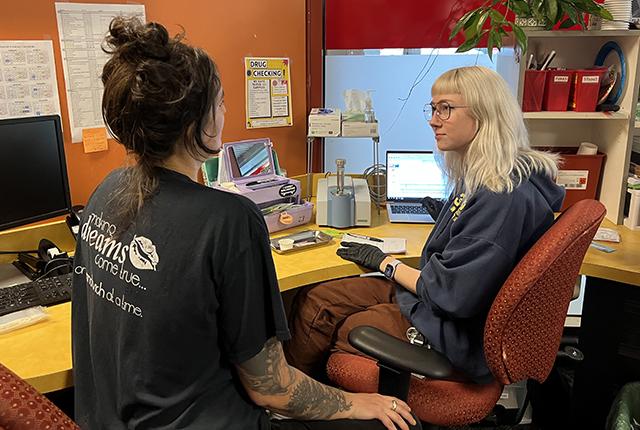
Report outlines illicit drug-use patterns across Washington
Fentanyl and methamphetamine are most used, and mostly consumed via smoking, according to a survey of substance users.Media Contact: Brian Donohue - 206-543-7856, bdonohue@uw.edu

Across Washington state, heroin use has dropped considerably, fentanyl use has climbed, and methamphetamine continues to be highly prevalent — all according to a new survey of syringe-services program participants.
These and other findings emerged from the Syringe Services Program Health Survey in a report published by researchers at the University of Washington School of Medicine. The report’s collaborators included Public Health-Seattle & King County and the Washington State Department of Health.
Nearly 40 syringe services programs operate in 25 of Washington’s 39 counties. The last such survey occurred in late fall 2021 and involved 955 respondents. This time, 24 syringe-services programs took part, with staff and volunteers administering the in-person questionnaire to 1,667 voluntary participants between October 2023 and January 2024.
Other primary findings in the report:
- Most (89%) respondents said they had smoked a drug in the previous week, in contrast with other means of ingestion; 36% had both smoked and injected drugs, and only 10% had injected drugs exclusively. (In 2021, by contrast, 93%, of respondents reported injecting drugs.)
- 55% of respondents were unhoused and an additional 25% had only temporary or unstable housing. Among these respondents, two-thirds said they would reduce or quit using their main drug if they had stable housing.
- Participants said they would take advantage of additional services at their syringe-services program: 75% said they would see a healthcare provider and 68% would see a mental health counselor at the site where they took the survey.
“What struck me most about the survey results is the huge and continued need for the basics: housing, healthcare and support,” said Alison Newman, a report coauthor from the Addictions, Drug & Alcohol Institute. “We can learn so much from talking to people directly about their health and what services might help them.”
Among survey respondents this time, 80% had no housing or temporary housing. This percentage was substantially higher than the 66% of respondents who reported living in those conditions in 2021, said Caleb Banta-Green, a report coauthor and a regional expert on addiction.
“Some people are using opioids to numb the trauma of insecure housing, and some are using meth because they feel it helps them function. Being housed would give them a lot more stability in their lives and allow them to fully engage in treatment, whereas on the street they can’t really do that,” he said.
Among respondents, more had used methamphetamine (89%) in the preceding week than fentanyl (61%). Among users of either of those drugs, more than half reported ingesting them at least five days per week.
“There’s still a lot of meth out there,” Banta-Green said, adding that mortality data for the drugs suggests that “if fentanyl didn’t exist, we’d be ringing the alarm bells over methamphetamine.”
Nevertheless, use of fentanyl has “completed dwarfed heroin,” he said, a change that has, in parallel, spurred a huge shift away from drug injection and toward drug smoking.
In response to that shift, several syringe services sites are providing or planning to offer smoking supplies in addition to sterile syringes “to reduce the spread of infectious disease and to provide an alternative to higher-risk drug injection,” the report stated. Washington’s State Legislature enacted a law in 2023 allowing these programs to legally provide smoking equipment.
While sharing a pipe is much less likely to transmit infectious disease than sharing a needle, many drug users carry the misperception that it’s harder to overdose when smoking a drug, Banta-Green said.
“Fentanyl and meth are both so powerful that smoking is not protective against overdose. We want to make sure folks understand that,” he said.
Given that survey respondents expressed a strong interest in receiving healthcare and mental care onsite, and considering Washington’s new health-engagement hub model, Banta-Green said he sees “great potential to create much more access to lifesaving care.”
The Addictions, Drug & Alcohol Institute is part of the UW School of Medicine’s Department of Psychiatry & Behavioral Sciences.
Related:
- Q&A: Sara Glick, UW associate professor of allergy and infectious diseases and an epidemiologist with PHSKC, discusses drug-use patterns.
- Webinar: Newman and Banta-Green will discuss the findings at a webinar at 1p.m. PT Thursday, May 2. The online event is open to the public. Register here.
For details about UW Medicine, please visit https://uwmedicine.org/about.